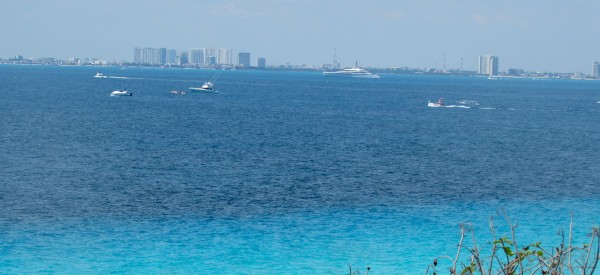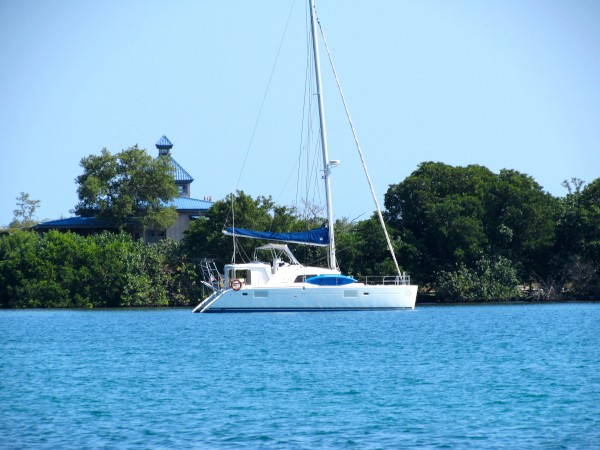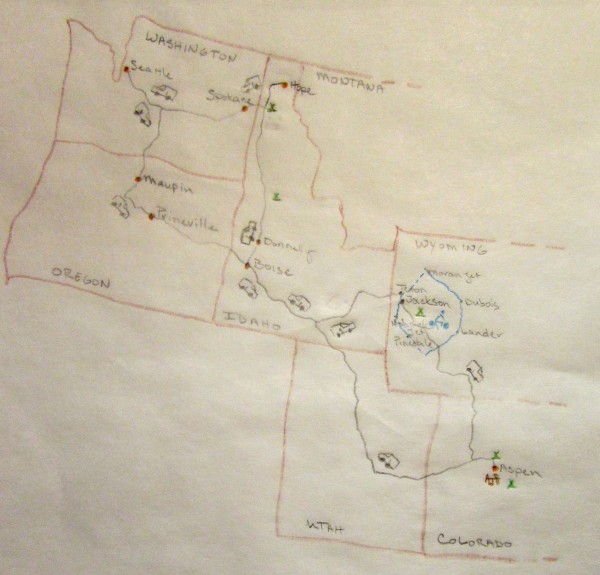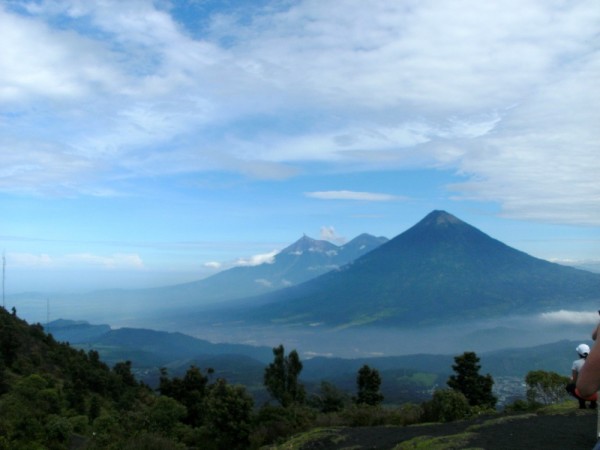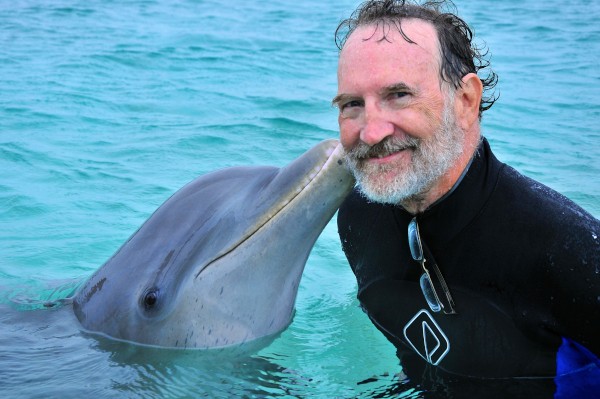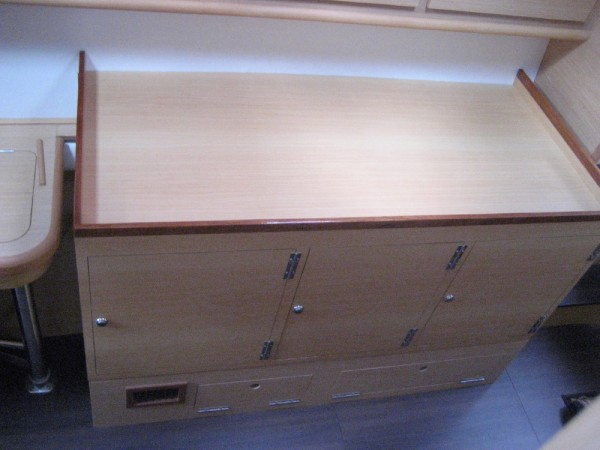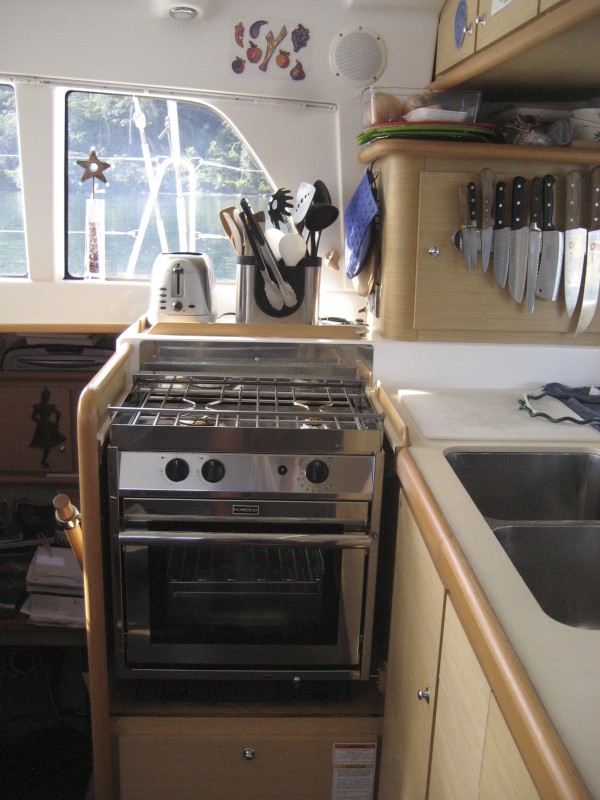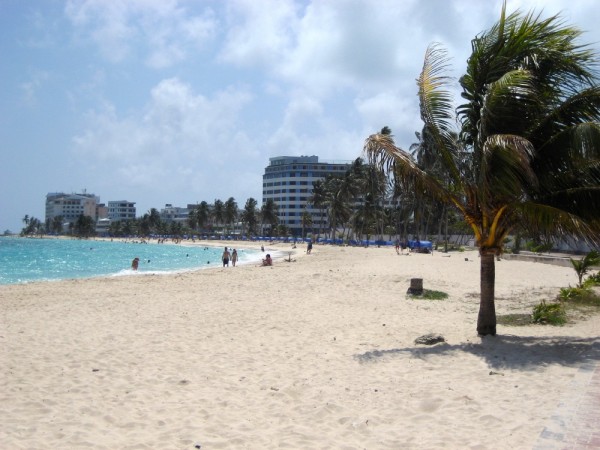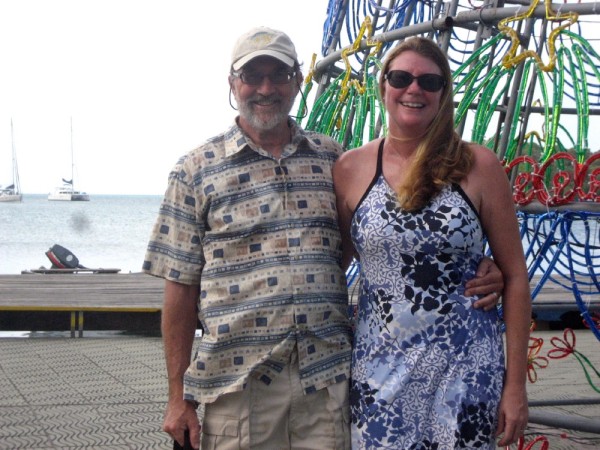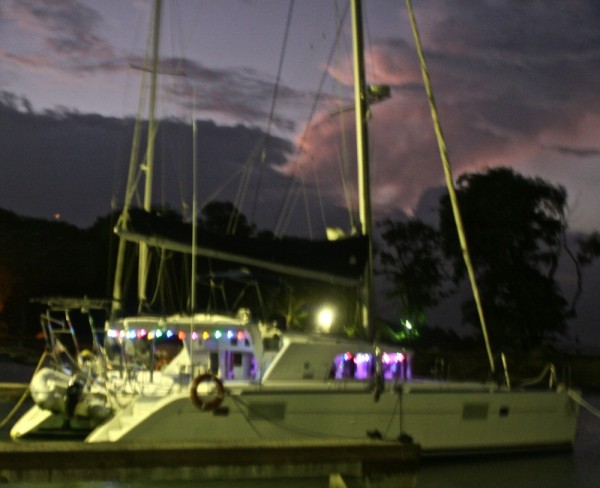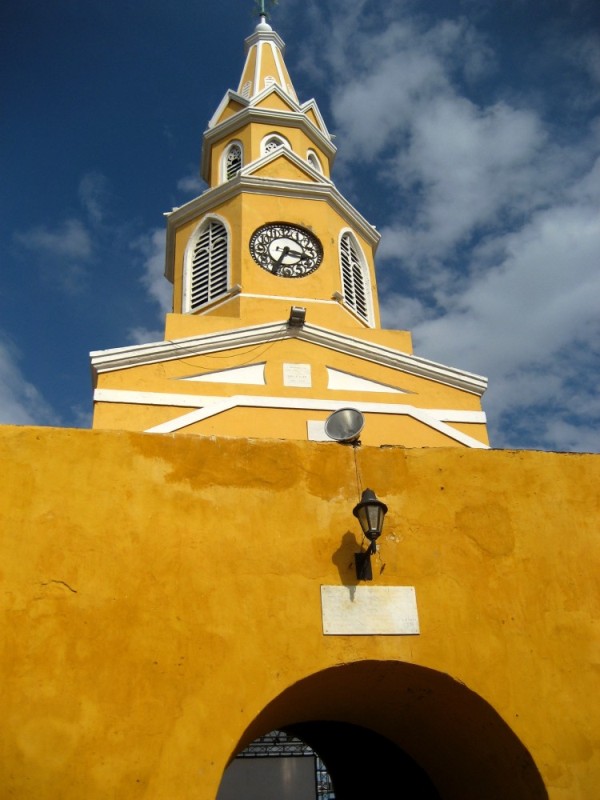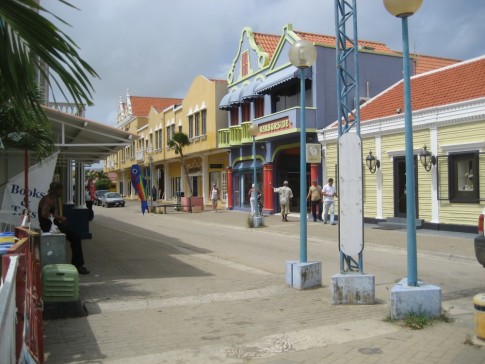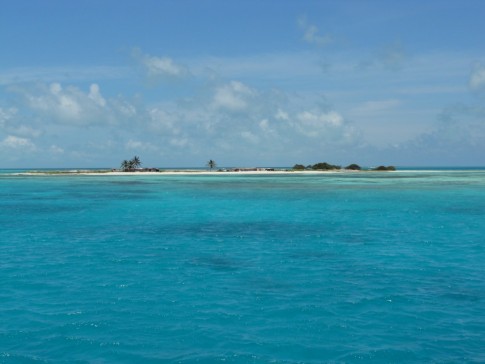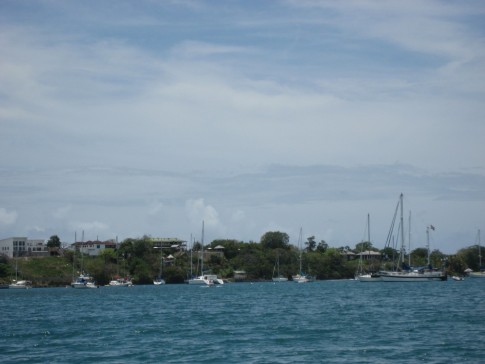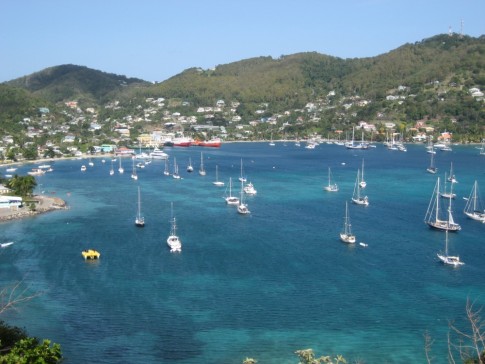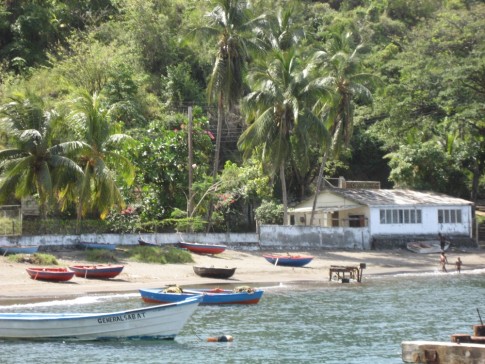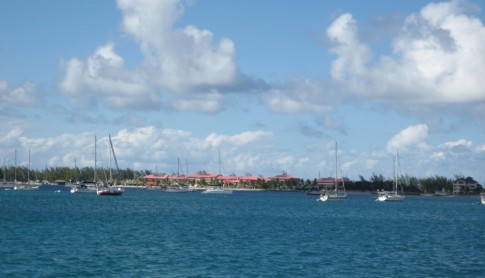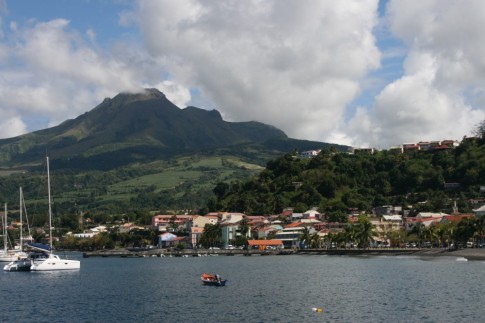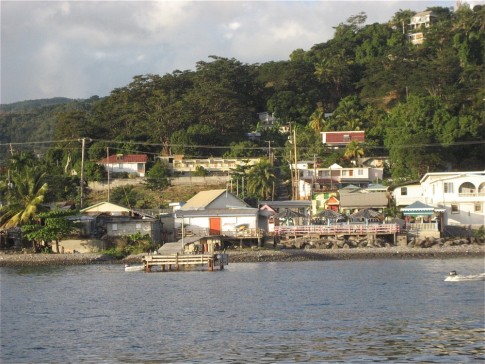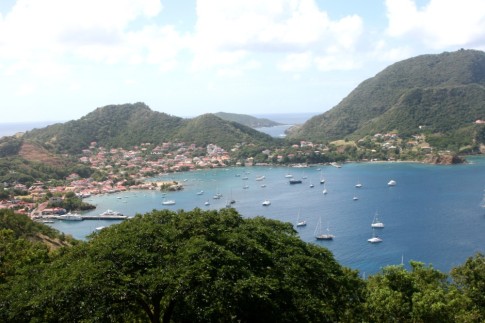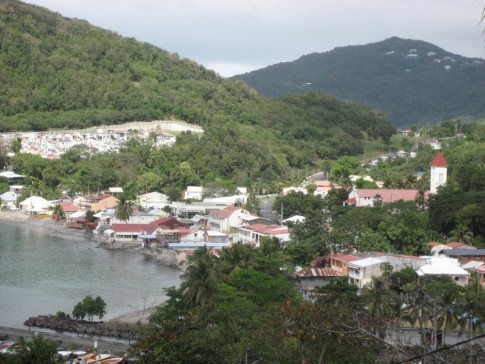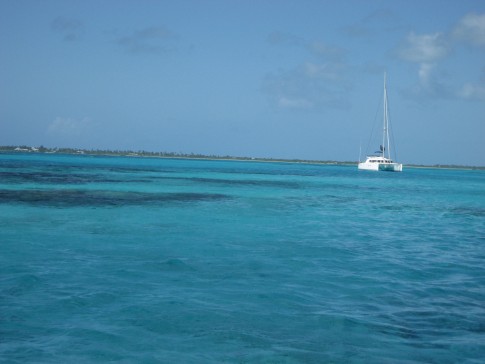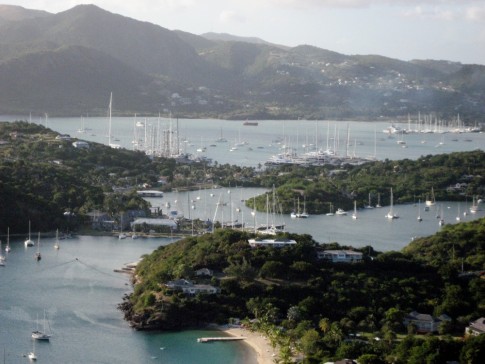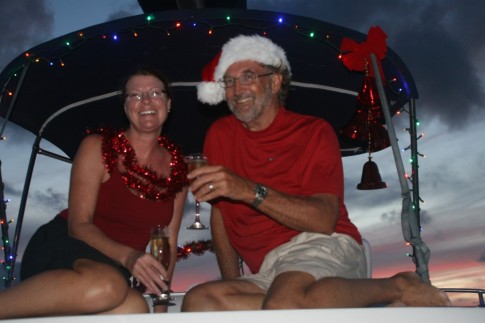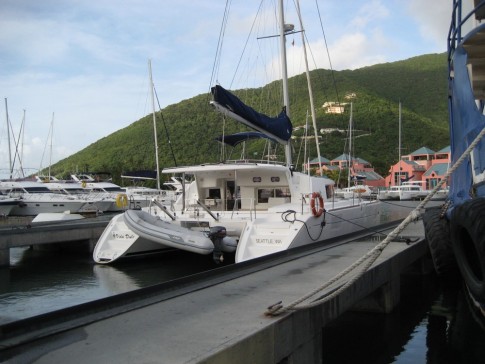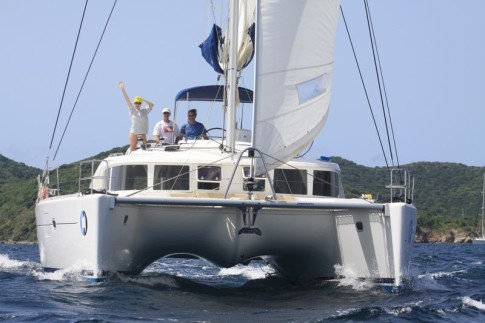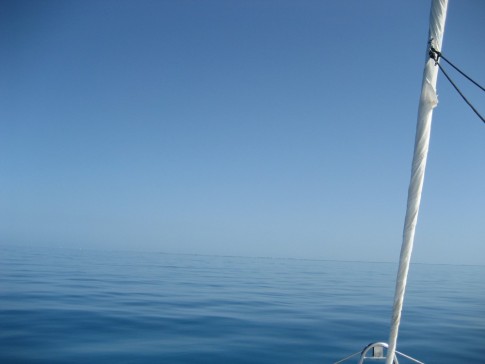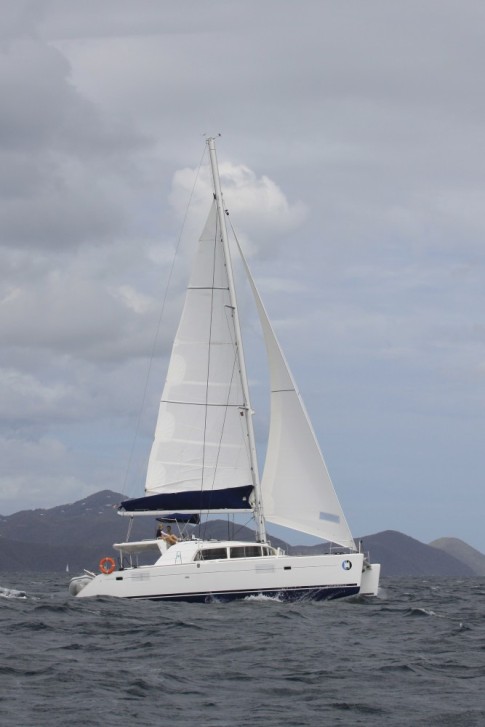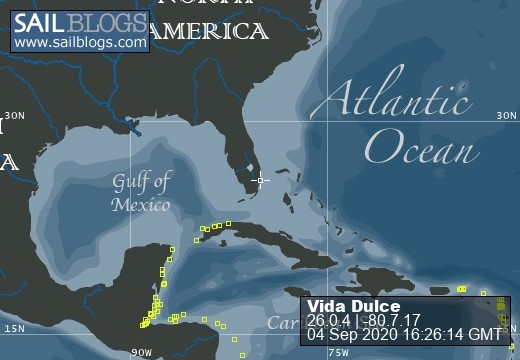Cruising with Vida Dulce
22 October 2020
04 September 2020 | Loggerhead Marina, Hollywood, FL
22 August 2020 | Hollywood, FL
20 August 2020 | Greenville, AL
18 March 2020
09 March 2020 | Isla Mujeres, MX
29 February 2020 | Isla Mujeres, MX
14 February 2020 | Isla Mujeres, MX
14 February 2020 | Isla Mujeres, MX
13 February 2020
22 January 2020 | Isla Mujeres, MX
10 January 2020 | Isla Mujeres, MX
06 January 2020 | Isla Mujeres, MX
04 January 2020 | Islan Mujeres, MX
31 December 2019 | Isla Mujeres, MX
30 December 2019 | Isla Mujeres, MX
29 December 2019 | Isla Mujeres, MX
28 December 2019 | Isla Cozumel MX
26 December 2019 | Cay Caulker, BZ
25 December 2019 | Bluefield Range Cays
Lithium (LiFePO4) Batteries, Part 1
04 May 2017
Jerry
I've been very interested in lithium batteries for years. When Vida Dulce was struck by lightning last year it created the opportunity to look more closely into them since the lightning, although causing no obvious damage, will reduce the life of our existing batteries.
This is the first of a multi-post series on my rational for moving some or all of the house battery bank to lithium, and my experience in doing so.
Part 1: Why lithium?
Let's look at some numbers.
We currently have 5 batteries (AGM) for a total of 1050 Amp hours of capacity. That's how much energy they can store. But the usable capacity is quite a bit less. You can only really use 30% because If you discharge the batteries to less than 50% of their capacity you damage them, and on the charging side, once they get above 80% of their full capacity their charge acceptance rate drops. To charge above the 80% of capacity you have to run the generator for a long time because the batteries won't let many amps come in to recharge them.
Lithium batteries are different. They will essentially take all the current that you can throw at them. However, if you over charge them or excessively discharge them you will destroy them. I'm starting with a fairly conservative approach and will use 70% of their capacity, between 15% and 85% of full charge.
This has important consequences. My current batteries (AGMs) have a useable capacity of about 315 Amp hours. I plan to replace that 1050 Amp hour bank with a 600 Amp hour lithium bank (6 x 100 Amp hour batteries) which will give me (conservatively) over 400 Amp hours of useable capacity.
Looks pretty good, and it gets better when you consider weight. The AGMs weigh 125 lbs each for a total of 625 lbs. The Lithiums weigh 28 lbs each for a total of 168 lbs. I can reduce the weight of the batteries on the boat by over 450 lbs. That's really good for many reasons.
A third factor is the cost of the batteries. The AGMs retail for $795 each for a total of $3975. The Lithiums retail for $625 each for a total of $3750. On the surface, it looks only marginally better however when you add in the lifetimes of the batteries, the numbers dramatically favor lithiums. Lead acid based batteries generally have a lifetime of 500 charge-discharge cycles. Lithium's have discharge cycle ratings above 1500. So the cost per recharge cycle for each battery bank is:
Lithiums $2.50
AGMs $7.95
Usable capacity, weight, cost and the expected lifetimes all favor the lithiums.
But there is a dark side.
Lithiums do burst into flames. You know that from all the cell phone horror stores you've heard. However, there are different lithium batteries chemistries. The ones I'm using are lithium ferrous phosphate (LiFePO4). They don't have the energy density that other lithium ion batteries have but they are far safer. They don't burst into flames. Their energy density is far better than lead acid batteries so I'm happy with that.
I alluded to the issue that if you are not careful managing your lithium batteries (charging or discharging) you can destroy them. They are not as forgiving as lead acid batteries. For this reason you need a "battery management system". And you need to look closely at the chargers that are currently installed and how compatible they are with lithium batteries (mostly they are not).
I'll address these issues in more detail in future blog entries, but for now a preview of my transition and testing strategy. I've installed one 100 Amp hour lithium (LiFePO4) battery that I'm using to power our heaviest load, our freezer. I've limited it's charger to a max of 80 Amps. When the charger goes on that battery sucks in those 80 amps all the way up to the 85% (my conservative approach upper-limit). As a comparison, an hour later the AGMs are still not fully charged (80%).
This is the first of a multi-post series on my rational for moving some or all of the house battery bank to lithium, and my experience in doing so.
Part 1: Why lithium?
Let's look at some numbers.
We currently have 5 batteries (AGM) for a total of 1050 Amp hours of capacity. That's how much energy they can store. But the usable capacity is quite a bit less. You can only really use 30% because If you discharge the batteries to less than 50% of their capacity you damage them, and on the charging side, once they get above 80% of their full capacity their charge acceptance rate drops. To charge above the 80% of capacity you have to run the generator for a long time because the batteries won't let many amps come in to recharge them.
Lithium batteries are different. They will essentially take all the current that you can throw at them. However, if you over charge them or excessively discharge them you will destroy them. I'm starting with a fairly conservative approach and will use 70% of their capacity, between 15% and 85% of full charge.
This has important consequences. My current batteries (AGMs) have a useable capacity of about 315 Amp hours. I plan to replace that 1050 Amp hour bank with a 600 Amp hour lithium bank (6 x 100 Amp hour batteries) which will give me (conservatively) over 400 Amp hours of useable capacity.
Looks pretty good, and it gets better when you consider weight. The AGMs weigh 125 lbs each for a total of 625 lbs. The Lithiums weigh 28 lbs each for a total of 168 lbs. I can reduce the weight of the batteries on the boat by over 450 lbs. That's really good for many reasons.
A third factor is the cost of the batteries. The AGMs retail for $795 each for a total of $3975. The Lithiums retail for $625 each for a total of $3750. On the surface, it looks only marginally better however when you add in the lifetimes of the batteries, the numbers dramatically favor lithiums. Lead acid based batteries generally have a lifetime of 500 charge-discharge cycles. Lithium's have discharge cycle ratings above 1500. So the cost per recharge cycle for each battery bank is:
Lithiums $2.50
AGMs $7.95
Usable capacity, weight, cost and the expected lifetimes all favor the lithiums.
But there is a dark side.
Lithiums do burst into flames. You know that from all the cell phone horror stores you've heard. However, there are different lithium batteries chemistries. The ones I'm using are lithium ferrous phosphate (LiFePO4). They don't have the energy density that other lithium ion batteries have but they are far safer. They don't burst into flames. Their energy density is far better than lead acid batteries so I'm happy with that.
I alluded to the issue that if you are not careful managing your lithium batteries (charging or discharging) you can destroy them. They are not as forgiving as lead acid batteries. For this reason you need a "battery management system". And you need to look closely at the chargers that are currently installed and how compatible they are with lithium batteries (mostly they are not).
I'll address these issues in more detail in future blog entries, but for now a preview of my transition and testing strategy. I've installed one 100 Amp hour lithium (LiFePO4) battery that I'm using to power our heaviest load, our freezer. I've limited it's charger to a max of 80 Amps. When the charger goes on that battery sucks in those 80 amps all the way up to the 85% (my conservative approach upper-limit). As a comparison, an hour later the AGMs are still not fully charged (80%).
New Inverter Installation
07 December 2016 | Rio Dulce, Guatemala
Susan / mostly cloudy periods of rain, 88 degrees F
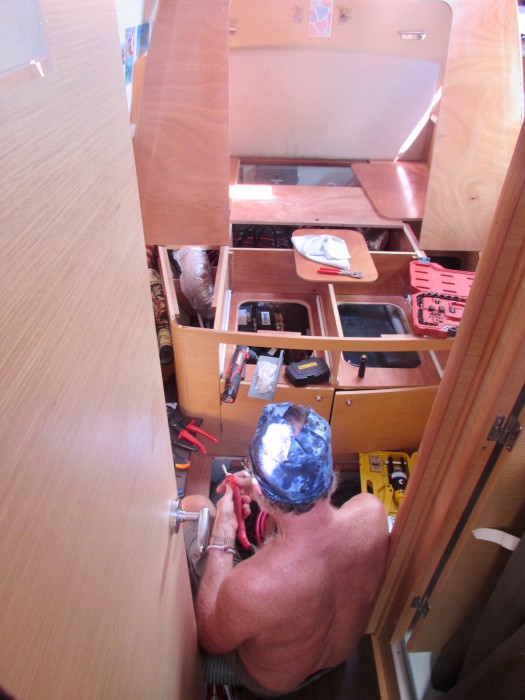
Lightening blew out the inverter / charger. To replace this, Jerry purchased a Mastervolt MASS 12/2000 inverter and 2 chargers, one for the Lifeline AGM batteries and another for the future LiFePO4 (Lithium Ferrous Phosphate) ones. The old inverter / charger was 65 lbs, and a bear to get out of the port-side engine space. The new inverter is smaller, lighter and will fit in the guest cabin where the batteries are located. Like pretty much every project we do, it involves new wiring. ;-) so that cabin has been dismantled for the duration. It's a hot & sticky two+ day effort. At the end of today, success! Another working system.
iCom M802 SSB Re-Installation
08 November 2016 | Rio Dulce, Guatemala
Susan / mostly cloudy, occasional rain, 85 degrees F
First major project: iCom M802 SSB radio re-installation. Well, not really an re-installation, more like a proper installation. Jerry discovered the original installation wiring is undersized - by quite a bit - for the distance between the battery bank and transceiver. Current wiring is 10-gage and it should 6-gage. We could move the location of the transceiver however while it will be hassle to rewire it, it’s an even larger one to move it, so we’ll rewire when we return with sufficient 6-gage for the run. Original installation was 23’ whip antenna at the starboard stern with a copper goundplate under the hull. We had difficulty hearing and being heard so a few years ago we changed the ground to a KISS installed under the master suite bed where the iCom SSB tuner is located. This gave us marginally better results. The new antenna is a GAM/McKim Split Lead Antenna mounted on the starboard main shroud, so much, much higher than the whip. The tuner is installed in a master suite storage cupboard located pretty much directly under this shroud and we reversed the installation of the KISS ground so that it is also inline. The last change will be to install the DSC antenna on the solar panel arch, but we need additional wire for this too. Not counting the wring still to be done, this project takes us 4 days.
Lightening Strike Damage Test Results
15 June 2016 | Rio Dulce, Guatemala
Susan / mostly sunny, hot & humid 97 degrees F
Jerry has completed his rounds of inspections and testing. A few items were resuscitated with new fuses, LEDs and/or a power cycle. Others pronounced dead for sure. Still others need to be replaced based on expert advise / experience.
Dead:
VHF antenna (blown away) & cable
Garmin VHF & remote including remote charging stations (2)
Garmin AIS
Garmin wind transducer
Garmin autopilot control head, heading sensor, course computer
iCom 802 SSB
Pioneer AM/FM radio
Xantrex Inverter / Charger
Balmar Centerfielder
Mintaka Duo barograph
Sump pumps on starboard side heads (2)
Starboard engine - starter sometimes doesn't kick over, when it starts it charges ok but a warning buzzer won't go off (no idiot lights though).
Starboard fuel gauge
Resuscitated however still questionable:
Garmin Radar (blown fuse)
Blue Sky solar charge controller (power cycled)
Raymarine autopilot (reset)
Navigation lights, steaming light (LEDs failed / replaced)
No way to stress test:
House battery bank - replace based on expert advise & words of wisdom from other sailors whose boats were hit by lightening.
Inside & Outside speakers (6) - AM/FM radio dead
Still to test:
Mooring light
Thru-hulls
While a long list, and I've probably missed a few items, there's lots of other equipment that tests out fine. In no particular order: Garmin chart plotters (2), NIMEA network, Garmin fish finder / sonar, Onan generator, interior lights (LED), washer / dryer, fridges & freezer (too bad since we'd love to replace them...), AC units, satellite phone / antenna, watermaker, solar panels, 3-D printer & other office equipment, laptops, Jerry's lab equipment, manual bilge pumps,.... plus no fires, no water intrusion (that we've found), and we were not personally zapped. We've heard worse stories; amazing the stories people tell of their own and their friends experiences, others they've heard about when one gets struck by lightning. We personally know of two or three boats that were struck, one a Lagoon 440 like ours and they were much worse off damage-wise. So small blessings if the insurance company & our policy is reasonable. Speaking of which,
Quick Haul: We moved it from Monday / Tuesday to Wednesday, then rescheduled it again to tomorrow (Thursday) so that the insurance adjustor / surveyor can be on site. He finally booked a flight to land in San Pedro Sula for this afternoon. This is not a fly-in, rent a car, drive a bit kind of location. There are two options for airports, San Pedro Sula (Honduras) and Guatemala City. The bus from Guatemala City takes 5 hours more or less. A car / driver can be hired for the 3 hour drive from San Pedro Sula. Funny thing though, the Guatemala / Honduras border closes 6pm. It's two hours from the airport to the border and he won't make it in time so he's stuck in Honduras for the night. We've arranged for a car / driver to pick him up at the hotel but he can only get across the border when it opens up and then it's 2 hours to the hotel, 2 hours back to the border and another hour here plus lancha time to our marina or Abels if we choose to go ahead and get the haul-out underway. Bottom line we're really not sure when he'll arrive on-site tomorrow. He's not been here before - he didn't even know where the Rio Dulce is - so it's sure to be an adventure. I hope this doesn't affect his mood in a negative way....
Dead:
VHF antenna (blown away) & cable
Garmin VHF & remote including remote charging stations (2)
Garmin AIS
Garmin wind transducer
Garmin autopilot control head, heading sensor, course computer
iCom 802 SSB
Pioneer AM/FM radio
Xantrex Inverter / Charger
Balmar Centerfielder
Mintaka Duo barograph
Sump pumps on starboard side heads (2)
Starboard engine - starter sometimes doesn't kick over, when it starts it charges ok but a warning buzzer won't go off (no idiot lights though).
Starboard fuel gauge
Resuscitated however still questionable:
Garmin Radar (blown fuse)
Blue Sky solar charge controller (power cycled)
Raymarine autopilot (reset)
Navigation lights, steaming light (LEDs failed / replaced)
No way to stress test:
House battery bank - replace based on expert advise & words of wisdom from other sailors whose boats were hit by lightening.
Inside & Outside speakers (6) - AM/FM radio dead
Still to test:
Mooring light
Thru-hulls
While a long list, and I've probably missed a few items, there's lots of other equipment that tests out fine. In no particular order: Garmin chart plotters (2), NIMEA network, Garmin fish finder / sonar, Onan generator, interior lights (LED), washer / dryer, fridges & freezer (too bad since we'd love to replace them...), AC units, satellite phone / antenna, watermaker, solar panels, 3-D printer & other office equipment, laptops, Jerry's lab equipment, manual bilge pumps,.... plus no fires, no water intrusion (that we've found), and we were not personally zapped. We've heard worse stories; amazing the stories people tell of their own and their friends experiences, others they've heard about when one gets struck by lightning. We personally know of two or three boats that were struck, one a Lagoon 440 like ours and they were much worse off damage-wise. So small blessings if the insurance company & our policy is reasonable. Speaking of which,
Quick Haul: We moved it from Monday / Tuesday to Wednesday, then rescheduled it again to tomorrow (Thursday) so that the insurance adjustor / surveyor can be on site. He finally booked a flight to land in San Pedro Sula for this afternoon. This is not a fly-in, rent a car, drive a bit kind of location. There are two options for airports, San Pedro Sula (Honduras) and Guatemala City. The bus from Guatemala City takes 5 hours more or less. A car / driver can be hired for the 3 hour drive from San Pedro Sula. Funny thing though, the Guatemala / Honduras border closes 6pm. It's two hours from the airport to the border and he won't make it in time so he's stuck in Honduras for the night. We've arranged for a car / driver to pick him up at the hotel but he can only get across the border when it opens up and then it's 2 hours to the hotel, 2 hours back to the border and another hour here plus lancha time to our marina or Abels if we choose to go ahead and get the haul-out underway. Bottom line we're really not sure when he'll arrive on-site tomorrow. He's not been here before - he didn't even know where the Rio Dulce is - so it's sure to be an adventure. I hope this doesn't affect his mood in a negative way....
Day 1: Lightening Damage Inspection & Stop Gap Measures
09 June 2016 | Rio Dulce, Guatemala
Susan / mostly cloudy, hot & humid 95 degrees F
Side note: This is day 3 without power at the marina due to a large thunderstorm that toppled trees and power lines knocking out power to the entire area a few nights ago. No internet and no shore power at most marinas. Here marina generators keep their offices, restaurants, and hotel rooms minimally powered.
Today we continue inspections and testing for lightening strike damage. A look up the mast reveals the VHF radio antenna is gone. Also up the mast, we already know the wind instrument is dead. Further tests show the AIS & radar both dead. We took a direct lightening hit to the top of the mast.
Visual checks of the base of the mast, port & starboard shrouds, show no obvious exit point. All that energy has to go somewhere... The insurance company wants a "quick haul" to inspect the hulls for exit hole(s) and related damage. There is only one place here that can haul-out Vida Dulce, Abel's, a very busy commercial shipyard. Jerry contacts them and lets them know our situation, Abel says they can take us Monday or Tuesday of next week.
Other inspections and testing:
Both Raymarine & Garmin autopilots are dead. We had the Raymarine one still working as our primary and Garmin as secondary; now we have none. Man am I glad we're already at the marina. Moving Vida Dulce much of a distance without an autopilot would be difficult; she's a heavy beamy boat to hand-steer.
The NIMA 2000 network fails to show the still operational instruments.
Solar charge controller is damaged; voltage comes in however the batteries are not being charged. This is very bad. We rely on the solar panels to keep the batteries full while we're away. This will also need to be taken back to the States to be bench-tested.
Dead inverter/charger stop gap measure: W&L thankfully has one battery charger in stock that will work as a stop gap measure; a 12 volt 40 amp model. Jerry wanted a minimum of 50 amps however you have to be happy with whatever you can find here that'll reasonable work. Jerry wires the new battery charger to circumvent the inverter charger. Until shore power is restored, we'll run the genset to supply power to the charger. In addition to charging the house batteries, this gives us hot water and one interior outlet for laptops.
I'll take Jerry up the mast sometime today or tomorrow for pictures and additional inspections. This will also test one of the main electric winches.
Good news: genset powers on; both engines start, manual bilge pumps work, and the salon helm station Garmin chart plotter works: depth sounder ok, GPS also appears to be working.
Today we continue inspections and testing for lightening strike damage. A look up the mast reveals the VHF radio antenna is gone. Also up the mast, we already know the wind instrument is dead. Further tests show the AIS & radar both dead. We took a direct lightening hit to the top of the mast.
Visual checks of the base of the mast, port & starboard shrouds, show no obvious exit point. All that energy has to go somewhere... The insurance company wants a "quick haul" to inspect the hulls for exit hole(s) and related damage. There is only one place here that can haul-out Vida Dulce, Abel's, a very busy commercial shipyard. Jerry contacts them and lets them know our situation, Abel says they can take us Monday or Tuesday of next week.
Other inspections and testing:
Both Raymarine & Garmin autopilots are dead. We had the Raymarine one still working as our primary and Garmin as secondary; now we have none. Man am I glad we're already at the marina. Moving Vida Dulce much of a distance without an autopilot would be difficult; she's a heavy beamy boat to hand-steer.
The NIMA 2000 network fails to show the still operational instruments.
Solar charge controller is damaged; voltage comes in however the batteries are not being charged. This is very bad. We rely on the solar panels to keep the batteries full while we're away. This will also need to be taken back to the States to be bench-tested.
Dead inverter/charger stop gap measure: W&L thankfully has one battery charger in stock that will work as a stop gap measure; a 12 volt 40 amp model. Jerry wanted a minimum of 50 amps however you have to be happy with whatever you can find here that'll reasonable work. Jerry wires the new battery charger to circumvent the inverter charger. Until shore power is restored, we'll run the genset to supply power to the charger. In addition to charging the house batteries, this gives us hot water and one interior outlet for laptops.
I'll take Jerry up the mast sometime today or tomorrow for pictures and additional inspections. This will also test one of the main electric winches.
Good news: genset powers on; both engines start, manual bilge pumps work, and the salon helm station Garmin chart plotter works: depth sounder ok, GPS also appears to be working.
This Year’s Rio Dulce Must Do Project List Complete!
10 December 2015 | Rio Dulce, Guatemala
Susan / mostly cloudy, showers, 84 degrees F
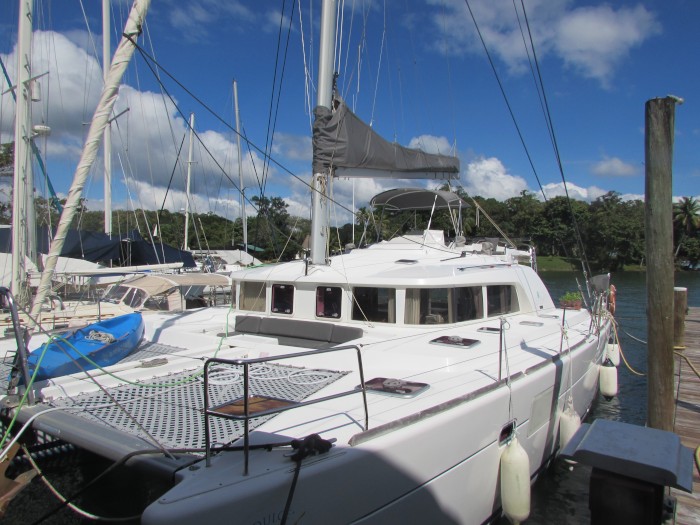
My oh my, we've checked off all of the must-do-before-departing projects for this year! New autopilot install (Garmin) leaving the Raymarine one in place as a backup (a huge complex project that warrants its own blog entry but Jerry will have to do that one); Garmin VHF and remote (removing Raymarine ones & related wiring); rebuilt watermaker (new membrane, clark pump); port side sail-drive repair; dinghy replacement steering cable & electronics; new trampolines; updated external canvas; new jack-lines & tethers for when we're underway; replacement throw ring holder; dozens of small-to-medium-do-it-while-you're-there projects; annual maintenance tasks; and Vida Dulce has gotten her annual wash & wax detail. Whew!
The BBQ grill needs an overhaul but we need parts from Australia for that, there is still a fresh water leak in the system somewhere, the dinghy tubes are not holding air as they should be, and the interior helm station needs to be reworked (dependent on other projects), however not everything can be perfect, you know...
Vida Dulce looks great and is almost ready for this year's cruising adventures. We have the final get-ready-for-passage tasks & activities but those will wait until we have a weather window to head North.
The BBQ grill needs an overhaul but we need parts from Australia for that, there is still a fresh water leak in the system somewhere, the dinghy tubes are not holding air as they should be, and the interior helm station needs to be reworked (dependent on other projects), however not everything can be perfect, you know...
Vida Dulce looks great and is almost ready for this year's cruising adventures. We have the final get-ready-for-passage tasks & activities but those will wait until we have a weather window to head North.
| Vessel Name: | Vida Dulce |
| Vessel Make/Model: | Lagoon 440 |
| Hailing Port: | Seattle, WA |
| Crew: | Jerry and Susan Barber |
| About: | Jerry and Susan moved aboard Vida Dulce in late October of 2010. We are currently in the Caribbean. |
Vida Dulce's Photos - Main
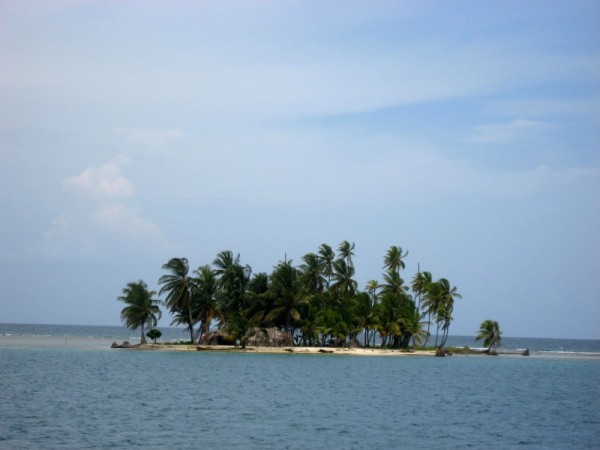 |
Pictures of our time in Panama, Sept 2011 - Dec 2012
1 Photo | 5 Sub-Albums
Created 29 September 2011
|
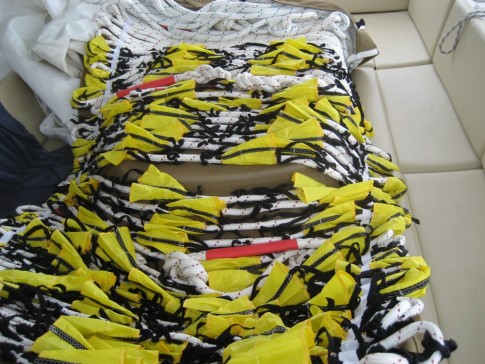 |
Photos of our series drogue and May 2011 practice deployment and retrieval
24 Photos
Created 13 May 2011
|
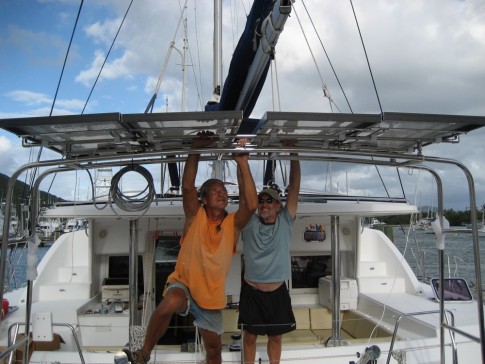 |
Photos of Red Hook, St Thomas and Vida Dulce getting a new bank of batteries and the installation of her new custom made arch which will support 4 solar panels.
28 Photos
Created 9 November 2010
|
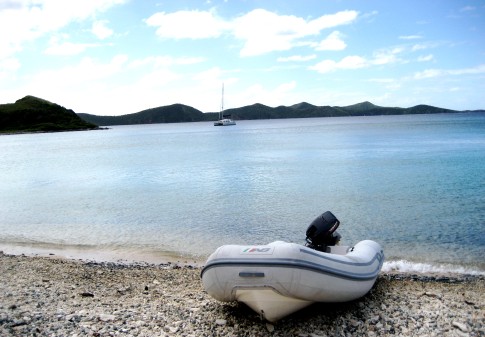 |
Lots of photos of various places not in other albums. Most are included directly in a blog entry.
27 Photos
Created 31 October 2010
|
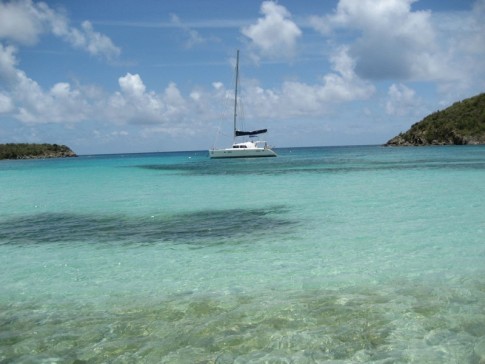 |
A "Working" Trip with Jim to start outfitting the boat for cruising.
31 Photos
Created 10 September 2010
|
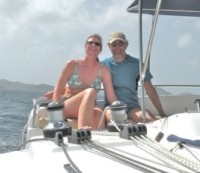
Who: Jerry and Susan Barber
Port: Seattle, WA

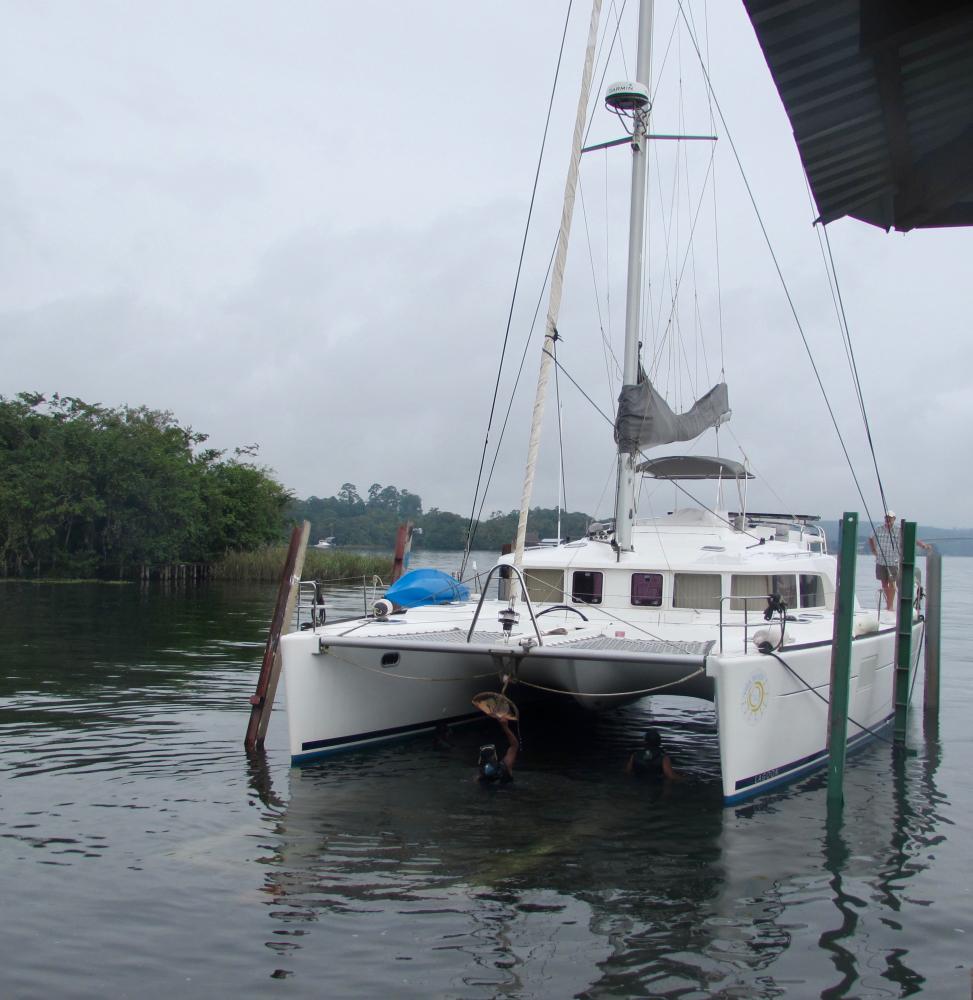
.jpg)

